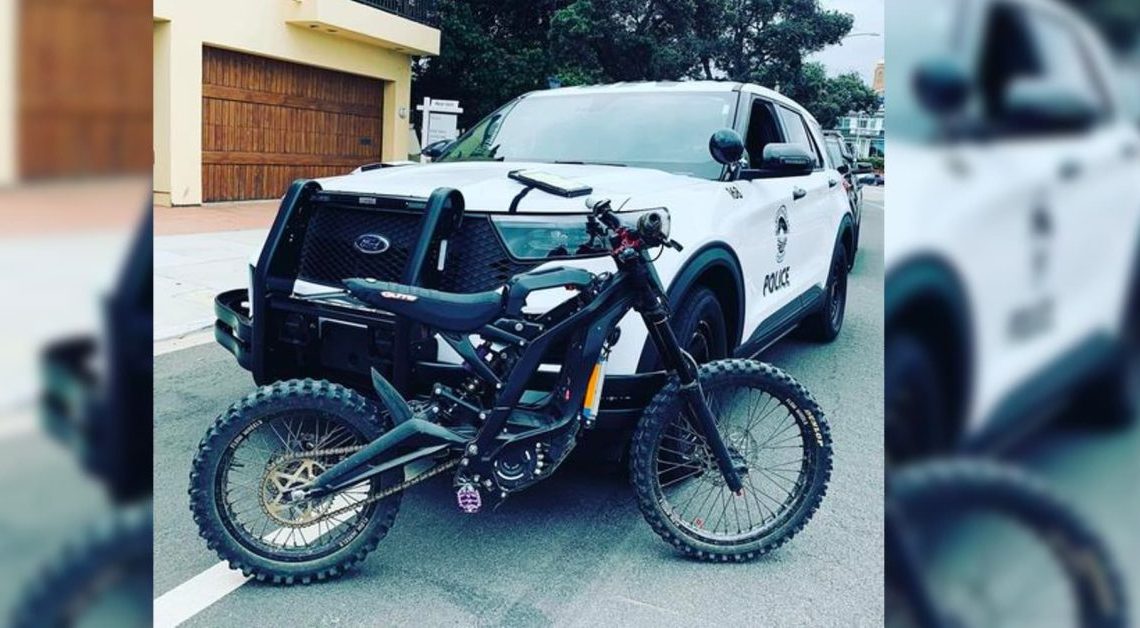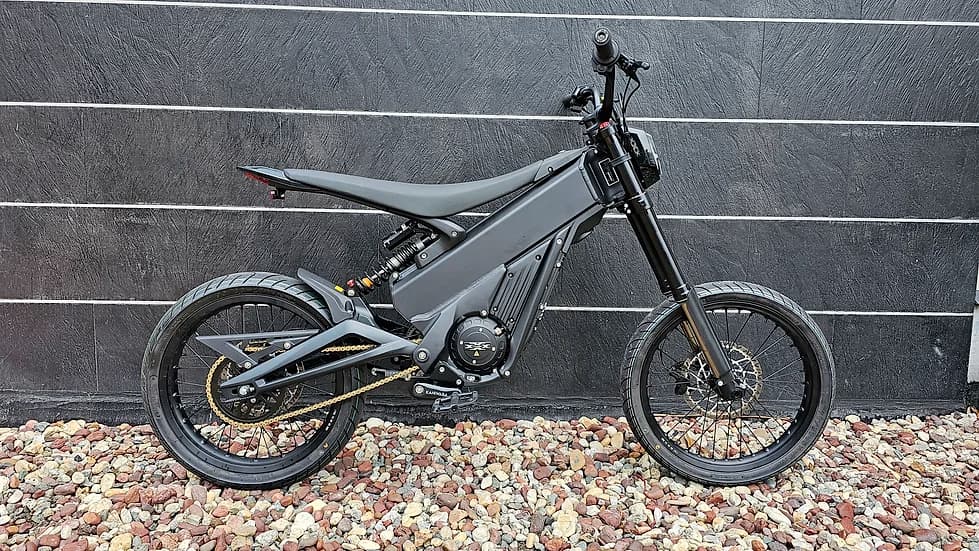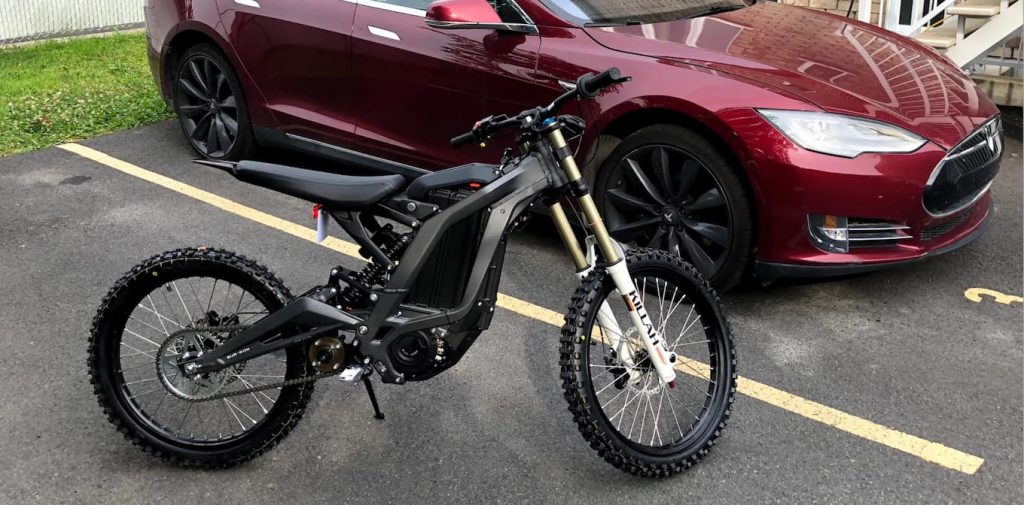
If you’re a parent of a teenager, there’s a decent chance you’ve heard the phrase “Can I get a Sur Ron?” sometime in the last year. Before you panic‑Google it or head to Amazon to see what one of these bikes costs, there are some important things you should know about this class of electric two-wheelers that have become all the rage with teenagers these days.
First, let’s clear something up: “Sur Ron” is technically one of many brands that makes these styles of bikes, but it’s become a catchall term – kind of like Kleenex. People often say “Sur Ron” when what they usually mean is any lightweight electric dirtbike with mountain‑bike styling and motorcycle performance.
The brand Sur Ron may have kick-started the category, but now there are plenty of similar machines: Talaria, Tuttio, Rawrr, ERidePro, Segway X260, and plenty of smaller new brands popping up constantly. For the purposes of this topic, just look at whatever model your kid is asking for. If it looks like the pictures you’re seeing here in this article – dirtbike frame, no pedals, or offers 40+ mph speeds – then regardless of brand, you’re dealing with a “Sur Ron‑style” electric motorcycle.
And that brings us to the key reality parents need to know: A Sur Ron is not an electric bicycle. It is a light electric motorcycle.
Kids might not realize that when they’re begging for one after their friends got one. Many of these bikes are marketed with vaguely bicycle‑ish visuals, and influencers often ride them on public roads or on bike paths. But legally, practically, and mechanically, these machines are nowhere near the same thing as an electric bicycle – and that’s the core issue parents need to understand before clicking “Buy.”

What is a Sur Ron, really?
Unlike a street-legal Class 1, 2, or 3 electric bicycle, a Sur Ron‑class bike:
- Has no spinning bicycle pedals
- Has a throttle-only drive system
- Usually tops out at around 40–50 mph (64-80 km/h)
- Is built like a lightweight motorcycle, not a bicycle
- Usually cannot legally be ridden on public roads, bike lanes, parks, or neighborhoods
There are a few exceptions to the street-legal issue, with brands such as NIU admirably homologating their designs for street-legal use. But this only further drives home the point, since such homologated models still require a motorcycle license to ride legally on public roads.
The point is, if it doesn’t have pedals and it goes over 28 mph, it’s not an electric bicycle almost anywhere in the US. That’s not my opinion – that’s how federal and state definitions work. Once you remove pedals and exceed those limits, you’ve crossed into motor vehicle territory.
Note: Part of the confusion stems from the vague term “e-bike”, which is often used to lump together everything from e-scooters and small electric bicycles to full-sized electric motorcycles. “E-bike” is morphing into a catchall term, but the legal classification of “electric bicycle” is what matters, and that legal denotation differentiates larger, non street-legal motorbikes from a street-legal two-wheeler.

Why do so many kids want one?
A huge part of the Sur Ron explosion has come from YouTube, TikTok, and Instagram videos showing teens doing wheelies, ripping around neighborhoods, and treating these machines like high-powered scooters. Kids see the cool factor, the speed, the off-road styling – and many assume they’re basically “super e-bikes.”
Well-known influencers regularly ride these types of bikes illegally on public roads and in bicycle lanes, often at speeds of up to 50 mph (80 km/h).
The marketing doesn’t help, either. Some retailers list these rides under the “E-Bike” category, even though they’re nowhere near legal electric bicycle specifications. Many come with easily defeatable speed limiters (more on that in a moment) to try to sneak by with questionable speed and power limits.
So in many cases, kids aren’t intentionally asking for a motorcycle. They simply don’t know the difference.
However, police are aware of the distinction, and they are increasingly confiscating these bikes when they are ridden illegally on public streets or bike lanes, especially by teenagers who are unfamiliar with the rules of the road.

The most important question for you: How do they plan to use it?
If your teen is asking for one of these motorbikes, consider asking them how they plan to use the vehicle before you decide what to buy.
If their answer is anything like…
- “Ride around the neighborhood”
- “Commute to school”
- “Go on the bike path”
- “Ride with my friends in town”
…then you can stop right there. A Sur Ron is not appropriate, safe, or legal for that type of riding.
What they need is a Class 1, 2, or 3 e‑bike – something with pedals, legal speed limits, and the ability to ride in bike lanes. There’s a healthy debate about which class is best for teens, but all three are at least street-legal and much safer than a Sur Ron or other light electric motorcycle for street and bike lane riding.
On the other hand, if your teen’s answer to why they want a Sur Ron is something like…
- “Trail riding”
- “Off-roading”
- “Learning motorcycle skills”
- “Riding on private land”
…then a Sur Ron‑class bike can be a great tool. With proper supervision, protective gear, and an appropriate place to ride, these bikes are fantastic learning platforms – and a ton of fun! They’re lightweight, don’t require clutch control, and have smooth throttles that make them more approachable than gasoline-powered dirt bikes. In fact, I’d say that they’re one of the best ways to learn motorcycle and dirt bike skills. Just be sure to get your kid geared up with the proper safety equipment, like a good helmet, gloves, and protective clothing. I really like a company called Beyond Riders (I have no affiliation) and I wear their armored jackets and pants on my full-size motorcycles – that’s how good they are.

Ask yourself honestly: Would you buy your kid a small motorcycle?
Just because it’s electric doesn’t make it any less powerful. If you wouldn’t buy your kid a motorcycle, then it doesn’t make sense to get them a Sur Ron. It’s just a motorcycle that you don’t fill up with gasoline.
Many of these models may claim to be limited to 20 mph (32 km/h), but they almost all have an easily bypassed speed limiter – often a single wire designed to be cut – that allows their top speed to be increased to around 40-50 mph. Electrek’s own publisher has talked before in our e-bike podcast about how his family’s Talaria seems to mysteriously have its speed limiter wire repeatedly cut after his teenager uses it.
These aren’t toys, and they’re not bicycles. They require the same level of responsibility, gear, and supervision as a gas dirt bike.
And depending on where you live, there can be serious legal consequences if your kid rides one on the street: tickets, fines, or worse, liability in the event of a crash.

So what should parents buy instead?
It may appear to some that this article or my views are anti-Sur Ron, but in fact, it’s the opposite. These are great machines, and it’s awesome that they exist. But like many things in life, context is important. These aren’t commuter tools (unless they’re homologated for street-legal riding and the rider has a motorcycle lesson). These are trail bikes for off-road riding.
If your kid’s goal is everyday riding – school commutes, local cruising, bike-path adventures – then you want a proper electric bicycle. Not a Sur Ron.
Look for reputable Class 1, Class 2 or Class 3 e-bikes from brands that make real electric bicycles (things that look like pedal-able bicycles with batteries). Brands like Lectric eBikes, Ride1Up, Aventon, Trek, Rad Power Bikes (while they last), and others are all great, affordable options for families searching for a teenager’s first e-bike. That is by no means an exhaustive list, but they are some of the most popular among younger, budget-minded riders looking for something safe and legal.
These brands all offer models with real pedals, legal speed limits, safer handling, and that won’t get your kid in trouble for riding where motorcycles don’t belong.

Final thoughts: Be real, be safe, and match the bike to the mission
It’s awesome that your kid is excited about electric mobility. That’s something worth supporting. But the right choice depends entirely on how – and where – they plan to ride.
A Sur Ron‑class bike is an amazing off-road machine, and a fantastic training motorcycle. But if the plan is to ride around town, go to school, or stick to bike paths, then it’s absolutely the wrong choice.
There’s no shame in saying “no” to the motorcycle and “yes” to a legal e-bike.
As with all things electric on two wheels, the key is to pick the right tool for the job. And despite the hype, a Sur Ron is not a bicycle. It’s a motorcycle. A fun, capable, impressive motorcycle – but one that needs to be used in the right place, with the right gear, and for the right reasons.
Author: Micah Toll
Source: Electrek
Reviewed By: Editorial Team



